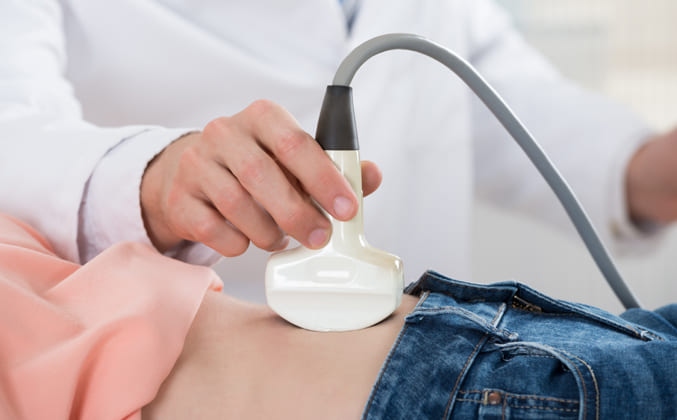Abdominal Aortic Aneurysm Scan (AAA)
Abdominal aortic aneurysms are often found during an examination for another reason. For example, during a routine exam, your doctor may feel a pulsating bulge in your abdomen, though it's unlikely your doctor will be able to hear signs of an aneurysm through a stethoscope. Aortic aneurysms are also often found during routine medical tests, such as a chest X-ray or ultrasound of the heart or abdomen, sometimes ordered for a different reason.

To diagnose an abdominal aortic aneurysm, doctors will review your medical and family history and conduct a physical examination. If your doctor suspects that you have an aortic aneurysm, specialized tests can confirm it. These tests might include:
- Abdominal ultrasound. This test is most commonly used to diagnose abdominal aortic aneurysms. During this painless exam, you lie on your back on an examination table and a small amount of warm gel is applied to your abdomen. The gel helps eliminate the formation of air pockets between your body and the instrument the technician uses to see your aorta, called a transducer.
- Computerised tomography (CT) scan. This painless test can provide your doctor with clear images of your aorta, and it can detect the size and shape of an aneurysm.
- Magnetic resonance imaging (MRI). An MRI is a painless imaging test that may be used to diagnose an aneurysm and determine its size and location.
Regular screening for people at risk of abdominal aortic aneurysms
It is also recommended that men ages 65 to 75 who have ever smoked should have a one-time screening for abdominal aortic aneurysms using abdominal ultrasound.
Men ages 60 and older with a family history of abdominal aortic aneurysms should consider regular screening for the condition.

